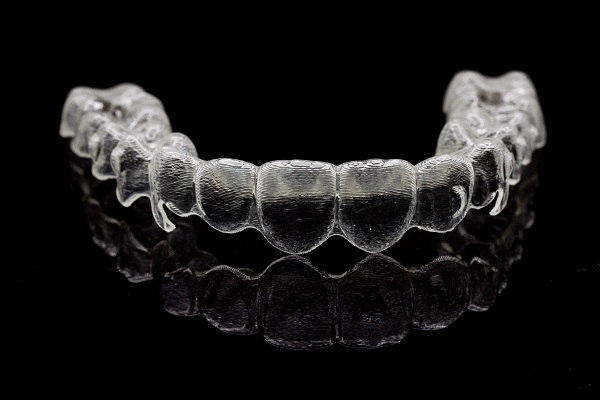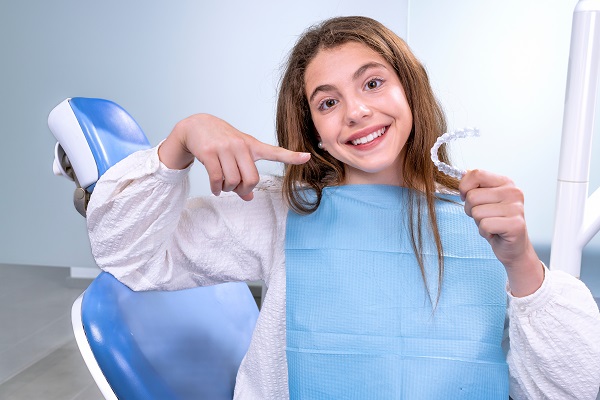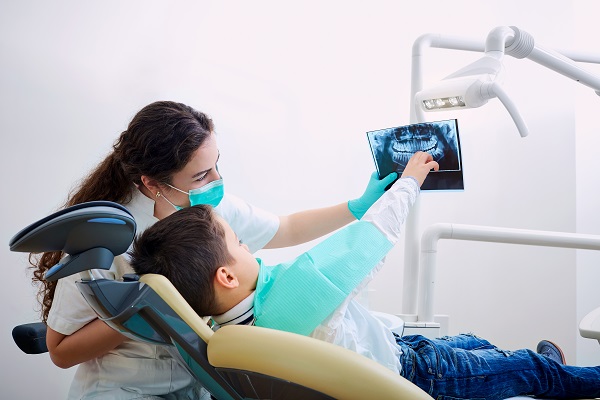An Orthodontist Explains How Invisalign Guides Teeth Into a Desired Position

The aligners that come with Invisalign® are completely different than traditional braces. You might be wondering how these small plastic trays can guide your teeth. The answer lies in the fact that you wear them for so many hours each day. Keep reading to learn more.
Why plastic aligners can move the teeth
As is the case with any removable braces, it is the aligners’ fit that makes the force to straighten teeth. In the beginning, each aligner fits poorly for a reason. It might feel too tight or a little snug. It can also be hard to take on and off because it is not designed to fit the teeth. It is designed to fit the future alignment of the teeth in two weeks.
Each aligner is responsible for one of the treatment steps. The aligner is made on a dental cast. The teeth’s alignment on the dental cast is one stage in several stages to straighten the teeth. This is known as the progressive alteration of the alignment shape.
Every aligner might work in one portion of the mouth. It might fit better in some areas than others. But the areas that it does not fit well in are the ones that will be changed. This might focus on one tooth or several.
That will depend on what movements need to be done at which stage of the treatment. Each aligner will provide gentle, yet constant pressure to the teeth around it. This gradually moves them into an alignment that matches the shape of the tray. So, during the two weeks that the patient wears the aligner, the fit will start to become more comfortable. It is the teeth, not the aligner, that are changing.
Is there any discomfort?
In general, moving teeth can cause some pain for patients. That is even more the case during the first several days of getting a new aligner. It might feel like all of the teeth are being forced around the mouth. But this is not necessarily the case.
With each aligner, the teeth are only moving a little bit. Usually, a tooth or group of teeth will move around 0.25 to 0.33 millimeters. This is around one one-hundredth of an inch. Although that might seem very small, the total movement is quite a bit. Consider the fact that a patient might wear anywhere from 10 to 30 aligners or more. This is enough to transform the patient’s crooked old smile to a new one.
Visit an orthodontist today for Invisalign
Invisalign uses a series of small movements to move your teeth. The reason it can do this is that it places constant pressure on your teeth. The teeth move just a bit with every new aligner, but you may have a few dozen. Doing your part by wearing the aligners consistently is important to see results. Visiting an orthodontist for a consultation today is the first step toward transforming your smile.
Request an appointment here: https://www.drsallysong.com or call The Orthodontic Center Of Wayne - Dr. Sally Song at (973) 696-5220 for an appointment in our Wayne office.
Check out what others are saying about our dental services on Yelp: Invisalign in Wayne, NJ.
Recent Posts
Understanding how clear aligners work is the first thing someone needs to do when considering this popular teeth straightening option. Because there are a few different straightening options to choose from due to updated dental technologies, those who are need of straightening services have a few choices. Clear aligners are one of the popular options…
Invisible braces are a popular choice for straightening your teeth because they are practically invisible in the mouth. In the past, the only option for people who wanted straight teeth was metal braces. Even though some people still opt for them, there are less noticeable options that are now available. There are different types of…
Not every mouth or situation is the same, but fortunately patients can choose between clear aligners and traditional braces. Some people are blessed with naturally straight smiles and the confidence that engenders. Others must get professional help to achieve a straight and beautiful smile, and both treatment choices can be effective in accomplishing that goal.Although…
Even though braces are common among teenagers, getting them is a new orthodontic experience for every patient. Teens and their parents tend to have many questions about braces and other orthodontic treatments for teens, when to get braces, and what having braces will be like. Here are some of the most common questions orthodontists hear…


